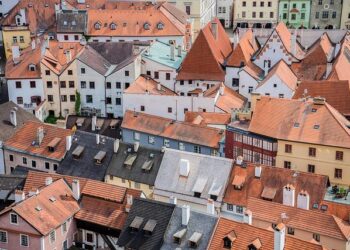As the countdown to the 2026 FIFA World Cup intensifies, football fans around the globe are turning their attention to one of the tournament’s most unlikely contenders: the Faroe Islands. Known for their rugged landscapes and a population barely exceeding 50,000, this North Atlantic archipelago has long been considered a minnow in international football. Yet, fueled by growing ambition and an emerging generation of talent, the Faroe Islands are mounting a historic campaign to qualify for the world’s biggest sporting event. Can one of the world’s smallest international teams defy the odds and leave an indelible mark on football’s grandest stage? We explore their quest, challenges, and hopes ahead of the 2026 World Cup.
Faroe Islands’ Football Evolution Strategies Boosting Competitive Edge
In recent years, the Faroe Islands Football Association has embraced a series of innovative approaches to elevate the national team’s performance on the international stage. Central to their strategy is the enhancement of youth development programs, designed to identify and nurture local talent from an early age. The integration of advanced sports science and data analytics has also played a pivotal role, allowing coaches to deploy tactical game plans tailored to exploit opponents’ weaknesses effectively. These efforts are complemented by increased investment in modern training facilities and partnerships with renowned European clubs, giving Faroese players exposure to higher-level competition and coaching standards.
Key components fueling this transformation include:
- Establishment of centralized academies focusing on holistic player growth
- Collaboration with sports performance experts for injury prevention and recovery
- Emphasis on tactical versatility and physical conditioning
- Utilization of video analysis tools for in-depth match preparation
| Area of Focus | 2021 | 2023 |
|---|---|---|
| Youth Program Enrollment | 150 | 320 |
| Training Facilities Upgraded | 1 | 3 |
| International Friendlies Played | 5 | 12 |
Key Players and Tactical Innovations Driving the Team’s World Cup Ambitions
At the heart of the Faroe Islands’ World Cup ambitions lies a core group of players whose resilience and tactical flair have begun to turn heads across Europe. Hallur Hansson, the captain and midfield maestro, orchestrates play with remarkable vision, while Sonni Nattestad provides a formidable presence in defense, combining physicality with smart positioning. Young talents like √Āri Mohr J√≥nsson infuse fresh energy, demonstrating that the Faroese development pipeline can yield competitive international athletes. This blend of seasoned veterans and emerging stars fuels the squad’s determination to punch above their weight on the global stage.
Coach H√•kan Ericson’s strategic approach has been instrumental in this progression, emphasizing a flexible 4-3-3 formation that adapts dynamically between defensive solidity and rapid counterattacks. Key innovations include:
- High pressing zones: disrupting opposition build-up early in their half
- Wing overloads: exploiting width to stretch defenses and create scoring opportunities
- Set-piece routines: meticulous drills yielding a disproportionate share of goals
This tactical maturity, combined with the players’ unyielding spirit, marks a strategic evolution for the Faroese team, significantly enhancing their competitiveness in qualifying matches.
| Player | Position | Caps | Goals (Qualifiers) |
|---|---|---|---|
| Hallur Hansson | Midfielder | 53 | 4 |
| Sonni Nattestad | Defender | 30 | 2 |
| √Āri Mohr J√≥nsson | Forward | 12 | 3 |
Expert Recommendations to Sustain Growth and Maximize Qualification Chances
To build on the progress the Faroe Islands have made in recent years, experts emphasize the importance of investing in youth development programs that target technical skills and early talent identification. Establishing football academies with access to professional coaching and facilities can nurture a new generation of players, helping bridge the gap between amateur and international levels. Additionally, arranging regular competitive matches against higher-ranked nations will expose the team to different playing styles and intensities, crucial for tactical adaptability on football’s grandest stage.
Key strategies recommended by analysts include:
- Enhanced scouting networks within the Faroe Islands and among diaspora communities
- Collaborations with established European clubs to facilitate player loans and training exchanges
- Focus on sports science and nutrition to optimize player fitness and recovery
- Utilization of data analytics to fine-tune performance and match preparation
| Priority Area | Action Points | Expected Impact |
|---|---|---|
| Youth Development | Launch structured academy programs | Higher skill level and tactical understanding |
| International Exposure | Schedule friendlies vs top-tier teams | Improved resilience and experience |
| Player Welfare | Implement sports science regimes | Enhanced stamina and injury prevention |
Key Takeaways
As the 2026 FIFA World Cup qualifiers progress, the Faroe Islands continue to embody the spirit of determination and passion that defines international football. While the odds remain steep for one of the world’s smallest teams, their participation alone shines a spotlight on the expanding global reach of the sport. Whether they can defy expectations and carve out a historic place on football’s biggest stage remains uncertain, but their quest is a testament to the sport’s power to inspire even the most unlikely contenders. The coming months will reveal if the Faroe Islands can turn ambition into reality and write a new chapter in World Cup history.
















